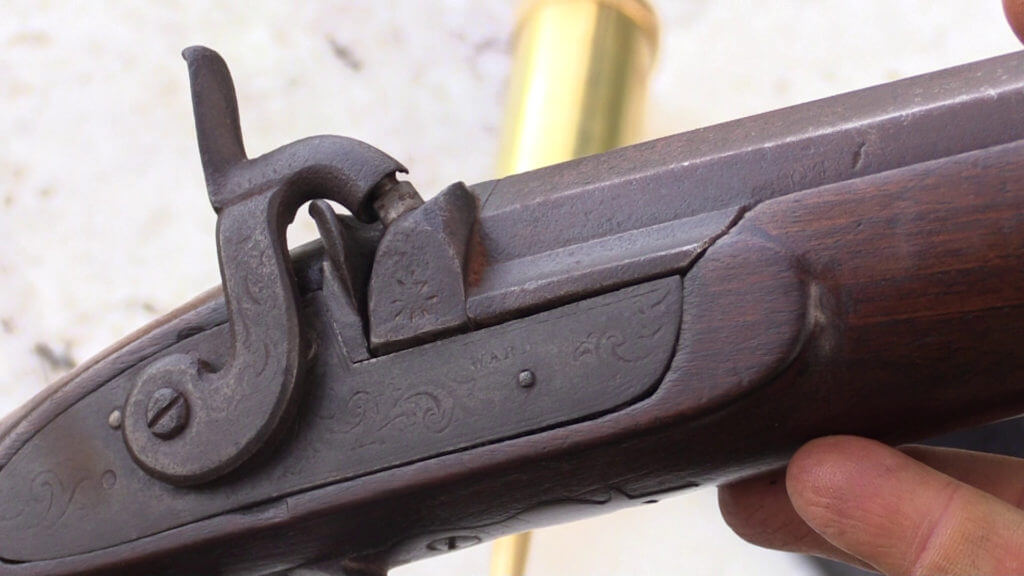
Guns are one of very few things in the world that almost never get thrown away. And granted, not all guns make it into the future, but an overwhelming number of them do. That’s for a reason. Guns almost always work for their intended purpose.
I get asked a lot, “do you think I should bring this to a gunsmith before I shoot it?” My answer is usually something like “well what do you think the gunsmith is going to do?” They are going to check it for obvious cracks or bulges, and shoot it. Very few gunsmiths have an actual pressure gauge, metal X-ray, or any other advanced kind of tool to look into the metallurgy of the gun.
With a cartridge gun, you have a lot of moving components. They can wear, get loose, and even work harden with use over time. I can’t say I would be comfortable shooting some break top revolvers from the turn of the last century I have I have seen in gunshops. But I had an Iver Johnson once, and it worked fine.
A muzzleloader is a whole other deal. For one, you have no moving parts in the breech whatsoever. The lock is merely a firing mechanism and is not involved with containing the ignited charge. If the hammer stays back reliably, and fires when you pull the trigger, I would say that the gun “works.” If the nipple holds a cap, or the pan on a flintlock has a normal looking flashhole, it probably works just fine.
I chose a muzzleloading shotgun for this article, because the side of the lockplate is really ugly, as you can see. Overall the gun is not that bad, but it’s the kind of gun that would sit in most gunshops for years with no takers, at any price. This gun appears to have been made for Montgomery Ward, by some manufacturer in England. It says London Fine Twist, which means it is Damascus steel, and it does have British proof marks.
As I explain the video, I am not going to comment on how to decide if a gun is good enough regarding the bore. If a rifle has any rifling left whatsoever, it will spin the bullet and you will be able to hit what you are aiming at. A lot of pitting in the rifling with effect measured accuracy a great deal, but as long as the barrel is sound, point blank deer hunting distances will not see a lot of difference. As long time NRA writer Ross Seyfried once said, “most people can’t shoot a minute of basketball anyway.”
Shotguns don’t seem to be effected by light pitting in the bore, but the metal is thinner and pitting can lead to structural problems that can lead to bulges and cracks.
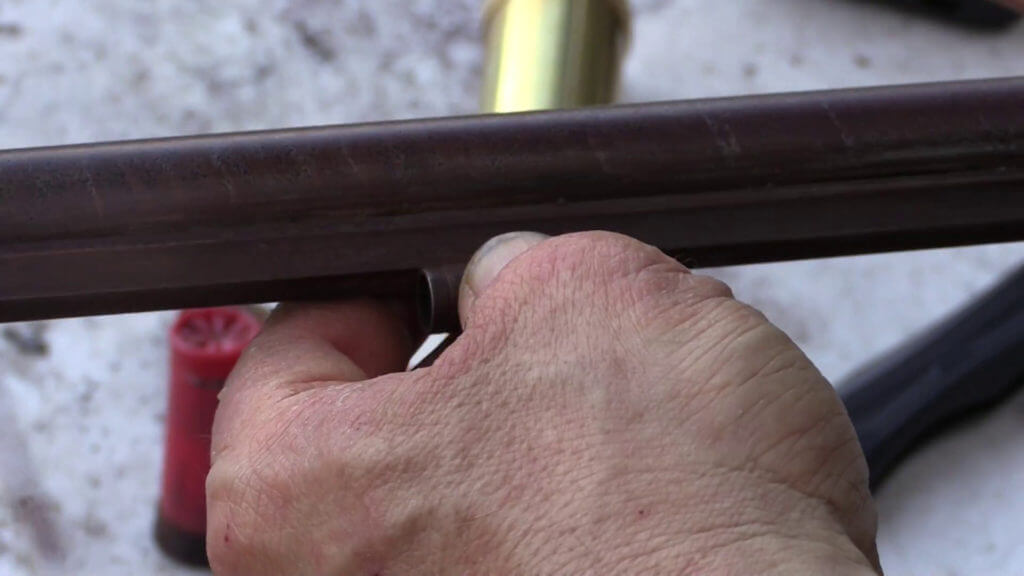
I have never personally seen a muzzleloading rifle that had a bulge or a crack. But that is the first thing you have to check if you are looking for a gun you can shoot. I try to slow down and inspect the length of the chamber and barrel carefully. Bulges and cracks are fairly common in shotguns. In a gunshop you probably won’t find one, but online it is important to get good pictures of the entire barrel from different angles.
A lot of muzzleloaders have been assembled with pins, not a wedge like you see with this gun. I personally don’t drift out the pins, because I don’t want to booger the gun. Usually you will see a wedge in a Hawken style rifle, and in most shotguns.

The guns that have the most issues out there are double barrel shotguns. Time itself can loosen the solder that holds the barrels together with the rib, and a heavy charge can make the whole thing just quit on you. This has happened to me personally with a 10 gauge that I had cut down to pistol length for cowboy shooting. So if a double has any give to it at all, just stay away. And be careful to test your charge before shooting it in the field.
This shotgun is a caplock, which most people prefer. But caplocks are the most challenging to find in genuinely serviceable condition. By serviceable, I consider that to mean that the nipple can be removed with a wrench, and that detail is going to eliminate most ugly muzzleloaders out there. Most of them have an impenetrable mass where the nipple used to screw in, and you will not be able to remove it.
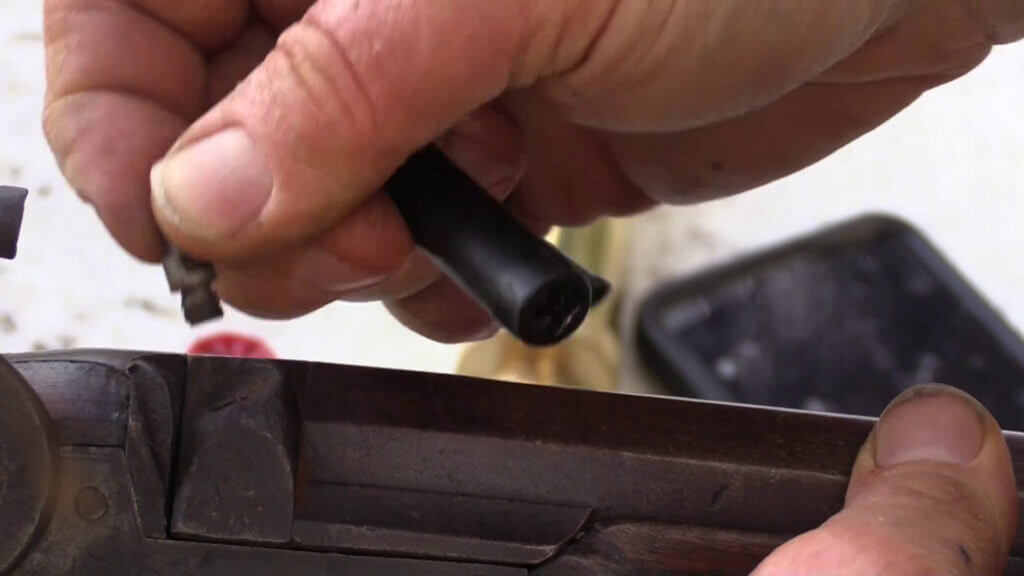
That is problematic, because at some point you could end up with either no charge (brainfart) or a dead charge (hunting in the rain) in the breech, and you could be stuck with no way to get the ball out. Ball pullers don’t always work, as lead is soft, and the screw that pulls them sometimes just doesn’t have enough grab to get it out without letting go. With shotguns it isn’t as big an issue, as you can almost always pull the charge.
It appears that this shotgun probably was in this poor state at one point, and someone drilled and tapped the solid mass for a nipple.
On a flintlock, it is rare that the flash hole is plugged, but sometime it is enlarged. I don’t have enough experience with flintlocks to know how this might effect performance or safety. But I did recently acquire a Brown Bess project that had been stored in a warehouse in Nepal since the 18th Century, and it will probably shoot fine, if I ever get around to cleaning it up.
Basic Safety Checks
By far the biggest concern with buying an old muzzleloader is that there could be a charge left in the gun by some previous owner. It is much more common than you might expect, and it can have horrible consequences if not handled the right way.
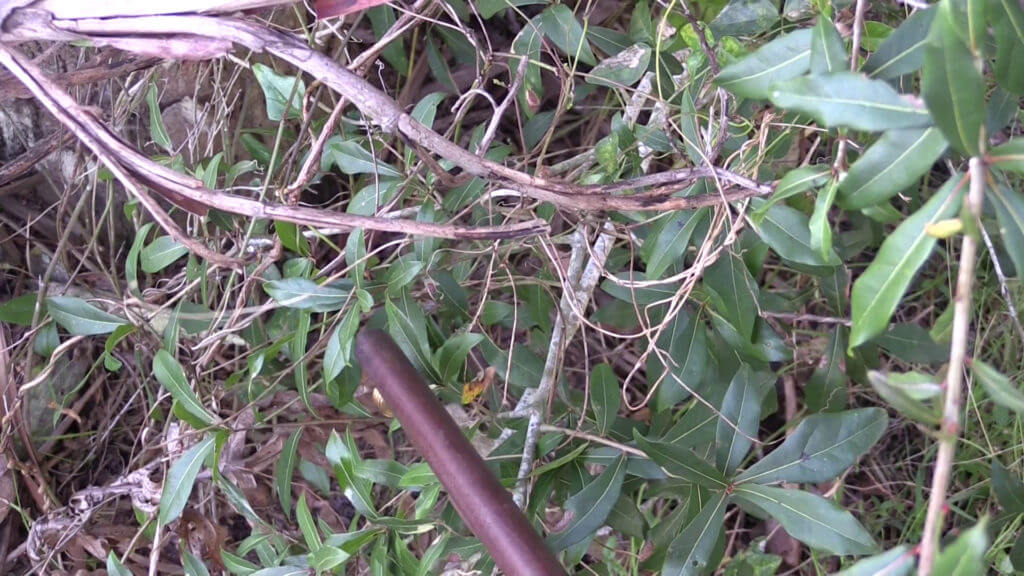
Black powder lasts indefinitely. Humidity does not effect it, nor does rust, and it will fire after hundreds of years in most cases. The exception is if someone doused it with oil, which will make a dead charge.
First you should see if there is any barrel obstruction at all by dropping your ramrod down the barrel. If it comes to the end, or what appears to be the end, you at least do not have a mid-barrel obstruction.
Pointing the gun in a direction where it is safe to fire an actual bullet, I cap it and hold the muzzle in front of a leaf. When the cap busts, the force of the air will move the leaf, and you’ll know that it clear sailing. If you are at a range with no leaves, tape a piece of paper.
Drop your ramrod back in and mark it so you have a record of the true bottom of the breech.
If the leaf doesn’t move, and no projectile comes out of the front after a loud bang, you probably have a dead charge and stuck projectile. At that point you can try a ball puller if you have one.
If that fails, I remove the nipple and put a little bit of powder in the hole. Then I screw the nipple back in and fire the gun again in a safe direction. Often this will pop the projectile out of the front and you can clean the gun and use it successfully from there on out. If it doesn’t, I would not try it again as if you drop your ramrod you will probably confirm that the ball moved forward. If you do it again, most likely you will bulge the barrel. I would try the bullet puller again at that point.
There is also a compressed air system ball remover that in my experience does not work, but you are welcome to try to it for yourself.
Pressure Testing
If the gun shows no outward deformity or cracks at all, there is very little chance that there would be a pressure problem with being able to handle a normal charge. A normal charge is roughly bore diameter, in grains of black powder. So a .40 caliber would be 40 grains.
These are not the outside limits of what the gun was made to handle of course. So if you are nervous about your intended charge, you may want to send it to a gunsmith to test.
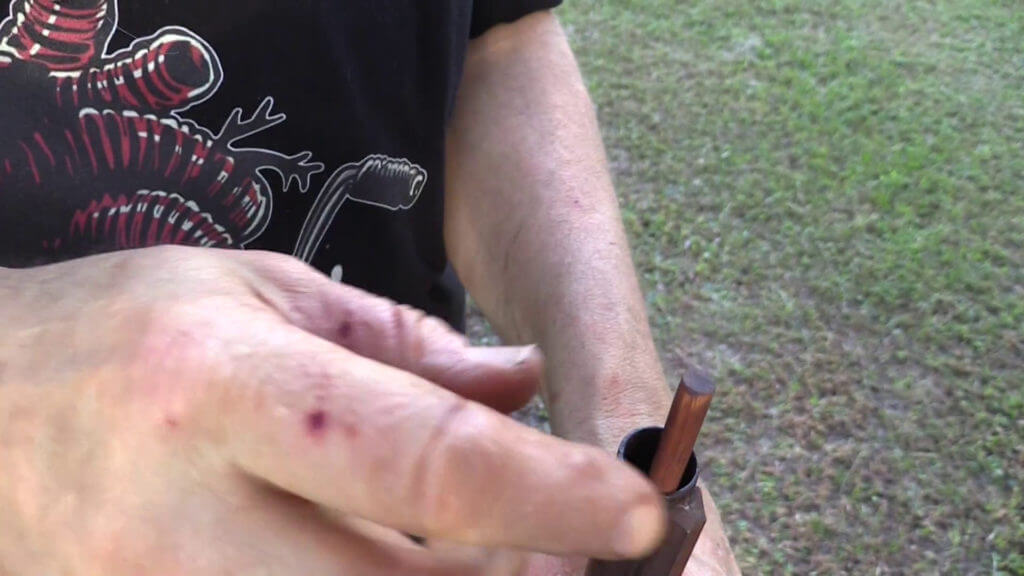
If you don’t have a gunsmith, I can tell you what I do. I tie or bungie the gun to a tire, and fire it with a string from a distance. After having done this with several guns over the years, it has never presented a problem, and no gun has ever failed.
There are those that say you can’t overload a black powder rifle that does not have a barrel obstruction, because only so much powder could burn in the barrel before the projectile exits, and that will not create more pressure than that for which the gun was designed.
I don’t offer this as advice though. I am just sharing what I have learned for myself.
Replica guns are probably not a problem, but vintage is another story. They’ve had a century or more to rust from the inside. A longtime friend of mine, now deceased, was a writer for Shooting Times and Guns & Ammo among other publications, and was an avid muzzleloader. On any vintage muzzleloader he planned to shoot, he always pulled the barrel, and removed the breech plug to inspect the inside before ever considering firing it. He found more than one that looked great on the outside and had rusted on the inside to the point of being dangerous to shoot. Black powder is hygroscopic and attracts moisture so any residue left in an old barrel will attract moisture and rust over the years. After reassembly, he would always tie it to a tire (on the ground) and test fire with a string tied to the trigger before he would ever put it against his shoulder. He had seen old muzzle loaders blow up. Now you can probably inspect the breech with a mini inspection camera with a LED light in the barrel, but at the minimum, I would test-fire it on a tire before putting it on my shoulder. Damascus barrels on old shotguns are also problematic. Those are formed with many layers of steel welded together and rust can get into the crevices and weaken the barrel. I would proof shoot those first as well.
Have always admired the LOCK STOCK AND BARREL arms used by our forefathers, so simple to make by our forefathers gunsmiths, and so easy to maintain and put food on the table or defend their properties and families. This article was well and truly easy to follow…opened my eyes to what can and should be preserved. I have an opportunity to view and possibly buy one or more black powder muiskets, rifles and shotguns where I am retired in Perú South America so am looking forward to see what I can find. Great article, Thank you.
One would be wise in these times to lay in a ML ,accoutrements, powder,lead,and casting equipment. Ive taken more deer with my kit built T/C Hawken .54 cal. circa ’79 and a T/C New Englander 12 gauge. My Ruger Old Army has taken plenty of rabbits and snowshoe hares. I think the author is mainly talking about older replicas tho. Dont walk by that lonley caplock sitting in the rack at the LGS! Pick it up and do the checks the author recommends. You just might end up with an old new friend.